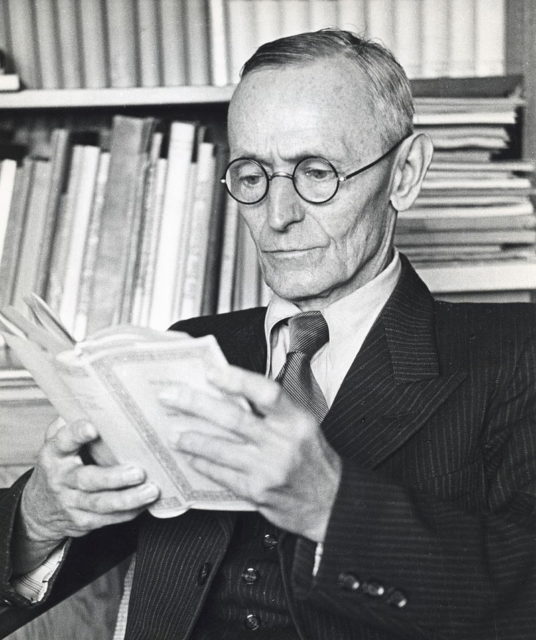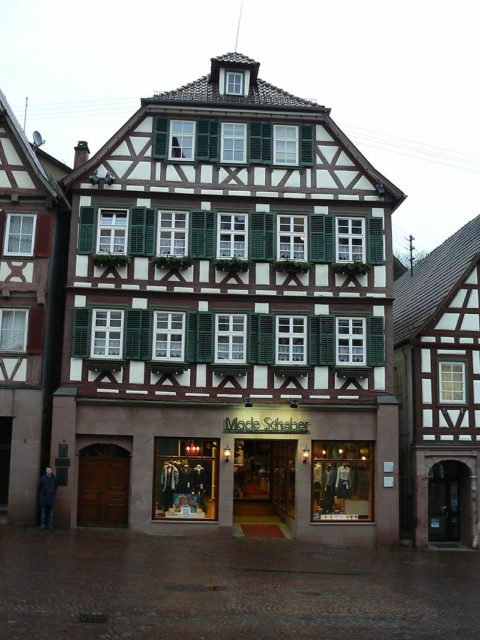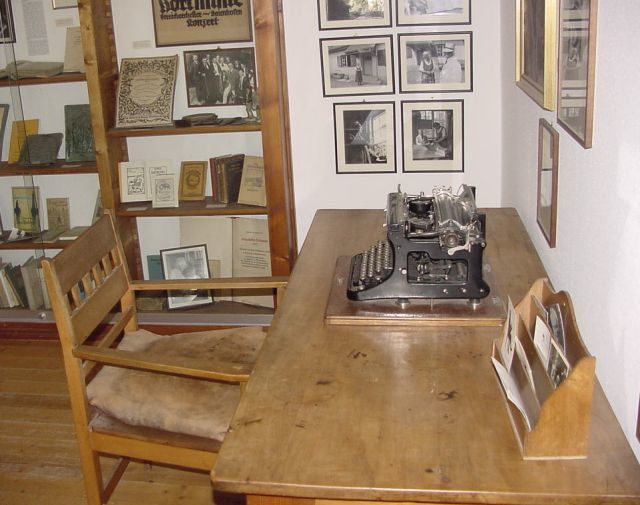The critically acclaimed and well-respected author Hermann Hesse is recognized as a prophet by half of the world. As for the other half, he hasn’t even been translated because possibly his books are considered too dull and heavy going. But for those unfamiliar with the Hesse, it would be meaningful to “meet” him.
Hesse’s books are “the first journey” and “self-initiation” of many adolescents, mainly in the post-war and post-socialist societies of Europe and South America. For some reason, the English-speaking world has been denied such spiritualism and mysticism, perhaps because his work is perceived as boringly complicated.
Thus Hesse’s writings haven’t been translated with the greatest enthusiasm. Inspired by Nietzsche and Schopenhauer, and guided by Carl Gustav Jung, Hesse is recognized as the star of German Romanticism. He is also referred to as the Jung of literature.

Hesse’s writing style is rooted in the outbreak of World War I, which had a profound effect on his life and personality. The lead-up to the war sent him into a severe depression. His later books are deeply connected with his depression and the psychoanalytical therapy he underwent with Jung. Hesse didn’t participate in the war on the front lines because he was considered unfit, so he found himself useful in taking care of prisoners of war.
While many of his fellow writers around Europe found their intellectual power benefited from supporting their countries in their writing, Hesse had a different experience due to his beliefs.
He wrote an essay entitled “Oh Friends, Not These Tones,” in which he tried to get intellectuals on board with his ideas: intellectuals and humanity are above nationalism; for the intelligent mind, love should be above hatred; and the idea of peace would be constructive only if they realized that it was their obligation to promote it instead of enforcing the sense of nationalism. The essay provoked extreme criticism and outrage, if not hate. His ideas about peace put him in political conflict with everyone around him.

Caught in a downspin of misfortune, things took an even more serious turn for the worse for Hesse in 1916. While the public controversy about Hesse was still going, his father died, his son Martin fell seriously ill, and his wife, Maria Bernoulli, was diagnosed with schizophrenia. He was forced to leave the army, and consequently was not the most popular man in his country. In 1920, Hesse moved to the small village of Montagnola, on Lake Lugano in Switzerland. He rented a few rooms in a castle-like building, the Casa Camuzzi, and he eventually found his peace here.

His personal life crumbling around him, along with the devastation and turmoils of war, Hesse was deeply wounded. It was, however, this period of his life that served as the turning point for his writing, as it inspired him to write some of the world-renowned classics of today.
In 1919, he underwent three weeks of psychoanalysis with Jung. Their meetings ended up in an obscure yet beautiful correspondence through which both men inspired and motivated one another. For Hesse, the relationship moved him to write Demian in 1919, followed by Steppenwolf, Narcissus and Goldmund, Siddhartha, and The Glass Bead Game.
Hesse, in fact, started elaborating on the archetypes he was struggling with in a more objective and accessible fashion for the adolescent generations, and he definitely succeeded in getting their attention. His books explore the common confrontations of the curious mind. There is purity and danger, contemplation and action, devotion and rebellion, and a curious individual who always struggles on the edge or in-between spaces, aiming for authenticity.

For some reason, he is praised in post-socialist environments in Europe and South America. There are many people for whom Demian was the threshold of their adolescent lives. Very few, if any, were left indifferent when they closed the book, for in most readers, Demian astounds with its psychological and spiritual bravery and freedom. It illuminates these virtues of the spirit that came after a long journey of wonder, confusion, and rebellion. and it is for this reason that it stands as a Romantic classic.
Read another story from us:J.R.R. Tolkien’s other adventure: Courting and marrying Edith Bratt
Later, in 1931, Hesse built his own house, Casa Hesse, in Montagnola, which was designed just as he imagined it. The Glass Bead Game, published in 1943, was Hesse’s last book, and for which he was awarded the Nobel Prize in 1946. He remained in his Swiss village home until his death in 1962, at the age of 85 and was buried in the cemetery in Montagnola.
“I wanted only to live in accord with the promptings which came from my true self. Why was that so very difficult?” Demian, Hermann Hesse.
